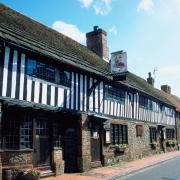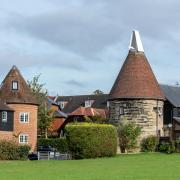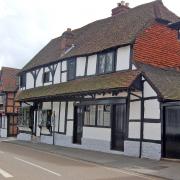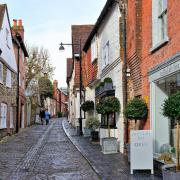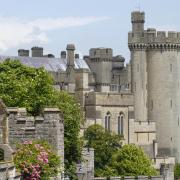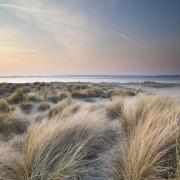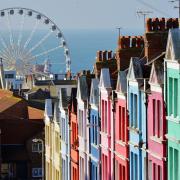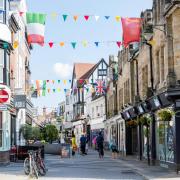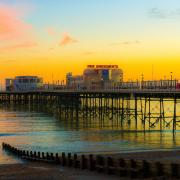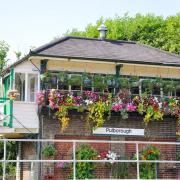Once a year, on the second Sunday in June, a crowd gathers on a remote hillside overlooking Brighton, to honour Indian soldiers who were cremated during the First World War. Tracey Hill looks at the long history of the Chattri Memorial
A colourful mixture of formal and informal, it is thought that the Chattri Memorial Service is the only one of its kind in the country and that it has taken place at least 50 times. “This year is our 90th anniversary" says the event’s co-ordinator Davinder Dhillon. “It’s open to the public and anyone is welcome to come along. The Chattri is part of the heritage of Brighton, and it’s important that we keep the memory and tradition going.”The location, with its remoteness and sweeping views over the Downs, the city of Brighton and the coast, provides an unusual setting for the pomp and formality of a memorial service. Usually visited only by passing walkers and cyclists, and spotted by curious motorists from the road between Brighton and Lewes, it becomes a hub of life for one afternoon, when cars and coaches bring hundreds of all ages and creeds to remember those for whom the memorial was built.Many Indian soldiers injured on the Western Front were hospitalised in towns along the south coast of England. One of the sites used was Brighton Pavilion, which was converted into a temporary military hospital. In total, 74 Indian soldiers died in Brighton’s military hospitals. There were 21 Muslims who were transported to a Mosque in Woking for burial. The 53 Sikhs and Hindus were taken to a hillside just outside Brighton, and cremated there, after which their ashes were scattered in the sea.The monument on the site, a white eight-pillared cupola in the traditional shape of a Chattri, (“umbrella” in Hindi, Punjabi and Urdu) dates back to 1921. Steps lead down to granite slabs built directly over the platforms on which the cremations took place. The monument’s dedication is engraved in English and in Hindi. The wording of the inscription was a subject for discussion, with the Secretary of State for India wanting to replace the phrase “passed through the fire” with the more straightforward “were cremated”. The original wording, with its spiritual connotations, was retained. There remains a connection between the Chattri and Brighton Pavilion: the southern gateway to the Royal Pavilion is itself a memorial to the people of Brighton – “Doctor Brighton” – who cared for wounded Indian soldiers.Upkeep of the monument, particularly given its remote location, was a problem throughout the 1920s and 1930s. During the Second World War, the entire surrounding area was requisitioned by the army for use as a training ground, and some damage to the memorial itself was incurred from rifle bullets discharged during firing practice. This led to the War Office contributing to the costs of its eventual restoration, carried out from 1946.The first Royal Legion pilgrimage to the memorial was in 1932, and from 1953 to 1999 the Patcham Royal Legion branch instigated a tradition of a pilgrimage and service at the site in June every year. The tradition continues, with a service commemorating those of different faiths, including Sikh and Hindu prayers and dedications. It is now organised by Davinder Dhillon, a local teacher. “I got involved because I couldn’t imagine the service not happening any more,” says Dhillon. “It’s important to recognise that these soldiers came from thousands of miles away to fight for our freedom. It wouldn’t be right for the tradition to just die away.”Under Dhillon’s care, the service has been increasingly well-attended, with the Indian High Commission and the Lord Lieutenant represented as well as the armed forces, the police, and the Mayor and other politicians representing Brighton and Hove. A plaque has recently been installed displaying the names of those who were cremated at the site, for which Dhillon successfully appealed for funding from the Commonwealth Graves Commission. “Most memorials show the names of those who died”, he commented. “It’s something that was always missing here.” Thanks to Dhillon’s efforts, and to those who come to the service to remember and give thanks, the sacrifice made by Indian soldiers will not be forgotten.
Getting thereThe Chattri memorial ceremony is on Sunday 12th June. The service starts at 2pm for a 2.30pm start and is around 30-40 minutes long. Tea and samosas are served afterwards at a nearby location.Getting there by car: Take the A27 towards Lewes from the A23 and turn right at the second exit. To reach the Chattri usually involves walking some distance over farmland, but on the day of the service, vehicles are allowed to drive up to the memorial.Getting there by bus: buses from central Brighton to Patcham village then walk. For more information go to www.chattri.com.







